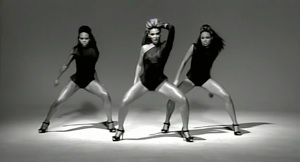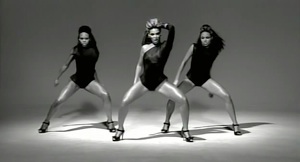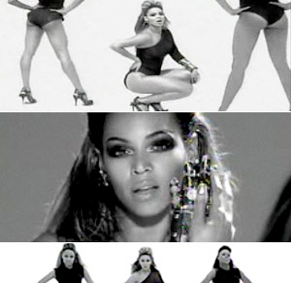
inter alia
2/19/09









I first listened to the song because someone called it “irritating and addictive,” which a combination I’ve always found interesting (for the record, I don’t find the song irritating, but it has been hard to get out of my mind). After I hit that first repetition/variation of the chorus I was hooked. Why does that section sound so weird? Well, the song is in E major (a little unusual in itself, by the way, since E major is typically a guitar/bass key, not particularly well suited to piano/synthesizer), and the melody in the chorus is a pretty simple descending melody — B A G# F# E — and most of the verse is E F# G#, E F# G#, E F# G# F# E. But in the chorus repetition, this huge bass comes in underneath in the wrong key. The bass goes B C, B A, and the note of C is not in the key of E major (it should be C#). It makes the bass sound massive, looming, even threatening. It breaks all the rules, and it sounds great—a song that might have been just froth suddenly has a moment that keeps you acoustically pegged.
A couple of other things to note. If you look at the basic melodies for the verse and chorus section, you’ll see that they both stay away from the C/C# question—it’s a melodic space that’s been deliberately left ambiguous, suggesting that the song may have at least partially been crafted just to whack you with that impossible C in the chorus.
The second thing is that the phenomenon at work is called “bitonality,” or playing in two keys at the same time. Here’s the fascinating part about bitonality—check out this post at Cognitive Daily (one of my favorite cognitive science blogs), and listen to the two examples of “Ave Maria.” As the study referenced indicates, non-musicians do not find bitonality unpleasant—indeed, they cannot even recognize it when they hear it. Most musicians react with immediate disgust or begin to laugh, it sounds so deeply and profoundly wrong to them. I do not know offhand who wrote Beyoncé’s song, but this was someone smart enough to (a) know that listeners don’t mind a bit of bitonality and (b) know when to use it.
And finally, here’s a piece that Bill and I wrote a couple of years ago—he emailed me an mp3 file of the bass and drums and then I did crazy things with the guitar on top of that. I asked him what key it was in, and he wouldn’t tell me, so I just played things on top that I thought sounded interesting. There’s at least some bitonality at work in the opening section, but I think it sounds fine—weird, maybe, but deliberately weird. So, I guess it was actually Bill who made me go bi, and not Beyoncé after all.
UPDATE
This blog has a much more detailed analysis of Beyoncé “Single Ladies,” and thinks that the melody might be derived from the Largo section of Antonín Dvořák's Symphony No. 9, "From The New World" (Op. 95). You can listen to some of that here while looking at pretty pictures—I’m not convinced that they are “eerily similar,” but perhaps he’s referring to some other part—I don’t have the whole thing here. If only one could… download music somehow (I know, call me crazy) over the internet! Well, maybe someday!

Single Ladies
Rob Goes Bi
You knew it was going to happen. You knew it would happen in Europe. You didn’t know that it would be Beyoncé’s fault, though.






